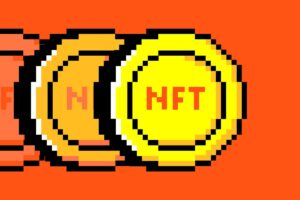Understanding the 2024 Bitcoin Halving: Key Insights and Its Significance for Cryptocurrency Trading


Occurring approximately every four years, the Bitcoin halving event diminishes the reward for mining new blocks by half. Significant to the realm of cryptocurrency trading, the anticipated 2024 halving is poised to affect Bitcoin’s supply, the overarching market environment, and its price potential.
Understanding Bitcoin Halving
Bitcoin halving marks a pivotal event whereby the incentives for mining new blockchain blocks are slashed by 50%. In simpler terms, miners will acquire 50% less Bitcoin for every transaction verification process they complete. These halving events recur after about every four years—or specifically after 210,000 blocks have been successfully mined—and they will persist until the finite supply of 21 million bitcoins is fully mined.
This phenomenon is noteworthy for traders as it constrains the pace at which new bitcoins are injected into circulation, creating a scenario of limited supply. Should demand remain robust, this diminished supply could contribute to appreciating prices.
Although past occurrences of Bitcoin halvings have often precipitated substantial rises in price leading up to and following the event, it is important to recognize that each halving unfolds within a distinctive market context, and the demand levels for Bitcoin can fluctuate dramatically.
Rewards from block mining form a critical element of the blockchain’s self-operating architecture that monitors transaction verifications and establishes new blocks, otherwise referred to as mining. Competing in a race to unravel complex cryptographic conundrums, miners vie for the chance to be rewarded with new bitcoins upon solving the puzzle first.
Following the addition of their block to the blockchain, they are bestowed with the reward, ushering in a new competition cycle. Concurrently, as miners affirm the validity of the latest block, they also contend to decipher the forthcoming puzzle, vying for the next block reward, which progressively decreases in value.
Mechanics of a Bitcoin Halving
A core protocol within Bitcoin’s blockchain technology dictates the issuance rate of new bitcoins, essentially halving the miner’s reward for forming new blocks every 210,000 blocks. This programmed element ensures a gradual thinning of the rate of Bitcoin production.
With the reward halved, certain mining operations might no longer be economically viable when taking into account costs like those for power consumption and equipment. Unless the market price for Bitcoin encounters a sufficient rise to counterbalance these operational expenses, some miners may forego their operations, consequently diminishing the network’s total hashing power. Despite this, the network will maintain a consistent rate of block verification, thanks to an automated difficulty adjustment feature that assures steady verification of transactions.
Relevance of Bitcoin Halving to Cryptocurrency Trading
The market’s reception to the halving largely dictates potential pricing outcomes. Given the variability of demand, which is influenced by an array of market conditions, there is no certainty that demand will necessarily swell—or even persist—as the cryptocurrency market landscape has matured since the 2020 halving. Moreover, as Bitcoin navigates a field replete with established competing currencies, user engagement and market forces may change.
Individuals who hold Bitcoin or use it for transactions may encounter effects from the halving through price fluctuations. For instance, for those leveraging Bitcoin for commerce, these fluctuations could be significant and distinctly different from those observed pre-halving.
Similar consequences may be felt by those utilizing Bitcoin for remittances. The value of their transfers will hinge upon the market price post-halving, and as such, their transaction worth could either increase or decrease depending on how the market reacts.
Bear in mind that trading shares, indices, forex (foreign exchange), and commodities involves a substantial risk of loss, particularly when dealing with CFDs.
Past performance should not be taken as an indication of future results. This material is intended solely for informational use and should not be considered as financial advice. With respect to UK retail clients, there are restrictions on trading cryptocurrency CFDs and spread bets.
Source link
#Bitcoin #halving #matters #crypto #trading






